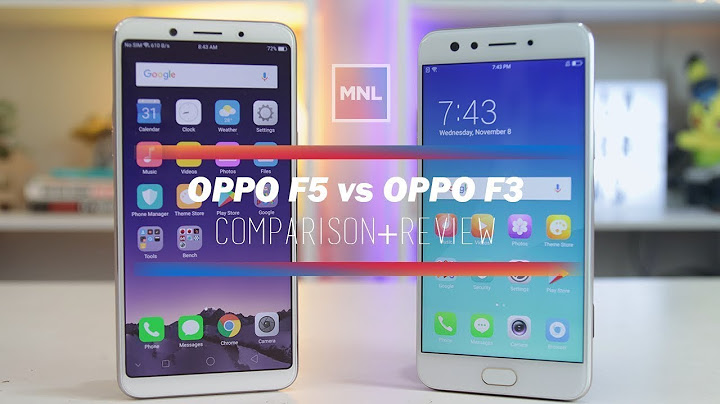As mentioned the Nikkor is a full format lens which can take advantage of a sweet spot effect on the D200. The vignetting is absolutely negligible within the APS-C scope regardless of the focal length or aperture setting.  MTF (resolution)All tests are performed near infinity focus so the following comments are only valid when using the Micro-Nikkor AF 70-180mm f/4.5-5.6D ED at conventional focus distances. True macro tests are not possible at this state. Within this scope the lens was able to deliver very good although not exceptional resolution figures in the lab. At 70mm the quality is excellent in the center and very good at the borders. At 135mm the center suffers from a slight performance penalty but the quality remains easily in very good territory. As to be expected the resolution figures decrease further at 180mm - still very good but not impressive for a pricey lens. The lens has a min. aperture of f/40 - a rather theoretical setting. At 180mm f/40 the measure resolution is 720 LW/PH which isn't really something that could be called "resolution" anymore. Due to diffraction this is an absolutely normal behavior though. Please note that the MTF results are not directly comparable across the different systems! Below is a simplified summary of the formal findings. The chart shows line widths per picture height (LW/PH) which can be taken as a measure for sharpness. If you want to know more about the MTF50 figures you may check out the corresponding Imatest Explanations Chromatic Aberrations (CAs)Lateral Chromatic aberrations (color shadows at harsh contrast transitions) are relatively well controlled. At 70mm they're more pronounced (1.15-1.5px on the average at the borders) whereas the issue is fairly negligible at 135mm and 180mm.  VerdictThe Micro-Nikkor AF 70-180mm f/4.5-5.6D ED delivered very good although no exceptional results (at conventional focus distances). The resolution is excellent at 70mm but the quality decrease towards the long end of the zoom range - a single ED element is obviously not enough to match the mid to long Micro-Nikkor fix-focals at their respective focal length. However, we are talking about an ambitious zoom lens here and flexibility simply comes with compromises. Vignetting and distortions are basically negligible and CAs are only an issue at 70mm. The build quality of the lens is exceptional with only the tiny tripod mount to complain about. Typical for most macros the AF speed isn't excessively high but if you take advantage of the focus limiter things are generally fine here. At around 1500€/US$ the lens is fairly pricey, more so regarding its rather slow max. apertures, and it is probably more a specialty item for macro enthusiasts - for the same price you may also get a Nikkor AF 80-200mm f/2.8D ED plus a 100mm macro lens which would make more sense for the majority of users. Zoom lenses with a Macro-setting was popularized during the '80. Nikon's initial negative approach to such idea to the Nikkor was understandable as it has added complexity in the lense design. Further, although no one wants to admit that, such complexity could also indirectly at a compromise on optical performance. However, eventually Nikon bowed to commercial demand and among all the Japanese lense manufacturers, the Company finally revamped their entire series of consumer grade Zoom-Nikkor lenses with a Macro feature. The "Macro", is not truthfully reflects the actual capability but rather, it should be more appropriate to term it as "close-focus", usually relates to magnification ratio between 1:4 and 1:6 and it was more popular with the wideangle-zoom than the mid-to-tele lenses. However, the true batch of Nikkor lenses that offer Macro is still confined to the premier class of MF Micro-Nikkor & Bellow-Nikkor lens series.  AF-D Zoom Micro-Nikkor70~180mm f/4.5~5.6sEDYear Introduced: September, 1997. Physical: Dual Rings Design. Optical Design: 18 elements in 14 groups. Maximum reproduction ratio: 1:1.3 at 180mm. In 1986, the first version of the Autofocus Micro-Nikkor lense, an AF Micro-Nikkor 55mm f/2.8 was introduced. The subsequent years, we saw many upgrades of the Micro-Nikkor, a radical change in design happened in 1989 where the focal length has been changed to 60mm instead of 55mm, it was followed by the redesigned of an AF version from the famed manual focus 105mm f/2.8. When the F90X enhanced Matrix Metering, many of these Micro-Nikkor lenses have also been upgraded to the D-versions. So, what are all these got to do with this here ? Well, I am referring to optical development of the Micro-Nikkor family which saw little creativity all these years. The last of the series within the close focus capable Nikkor lense that was truly be classified as "innovative" was the 1984'sMF UV-Nikkor 105mm f/4.0s as well as the much-hyped, but less practical DC (Depth of Filed Control) series of Nikkor (AF-Nikkor 135mm f/2.0s DC (1990) as well as AF Nikkor 105mm f/2.0s DC (1993). So , for quite a while, I thought Nikon was dried in ideas as most of the time, introduction of features in the Nikkor lens family were confined to lens/camera functions rather than lens type. So, when the lense was announced in September, 1997, this came as a pleasant surprise for all as, for the first time, there is a new lens type for 35mm photography.  PencilsCredit: Image courtesy of Hung Ming Weng, whose online PORTFOLIO can be accessed at PBase. Image copyright © 2006. All rights reserved. Please respect the visual property of the contributing photographer.  But application as a typical Micro-Nikkor never restrict its usage for close-up. It can be used for any purpose. At any other time, the flexibility of this macro-zoom will perform like any other standard zoom lense. - be it for portraiture, wildlife or simply use it for PR photography.  "The world's first Micro-AF Zoom Lense ! " - as Nikon claimed and there are plenty of reasons for the Company to shout about because it was a truly breakthrough in lens technology which was heavily missed all these years. Credit: Image(s) courtesy of some nice folks from DigifanCN® EBAY STORE, Image Copyright © 2008. All rights reserved. Please respect the visual property of the contributing photographer. This 70-180mm E/4.5-5.6D lens offers an array of advantages as it enables macro shooting throughout the zoom range, giving you a reproduction ratio of up to 0.75x. You can also adjust that ratio by zooming where you don't have to move the camera during shooting. Also, by adjusting the camera's position while zooming, you can get a range of perspectives of the same subject at the reproduction ratio for greater versatility. Plus, the lense employs ED glass which compensates for chromatic aberration and ensures high-contrast pictures and better quality for general photography too. These and other advantages make the AF Zoom-Micro Nikkor another addition to the Nikkor family for photographers t explore new grounds.  We often shot macro-photography with common topic around us such as this beautifully taken roses. Credit: Image courtesy ofMr. Nick Kalathas® from Pennsylvania. Nick portfolio is at Nature Moment which contains many excellent nature/wildlife images. Image copyright © 2005. All rights reserved. Technical Specifications for AF Micro-Nikkor Zoom 70-180mm f/4.5~5.6D:- Type of lense: D-type AF Zoom-Micro Nikkor lens with built-in CPU and Nikon bayonet mount Focal length: 70 to 180mm Maximum aperture: f/4.5 to f/5.6 Lens construction: 18 elements in 14 groups (one ED glass element) Picture angle: 34°20' to 13°40' (27°40' to 11° with IX240 system cameras) Focal length scale: 70mm, 85mm, 105mm, 135mm and 180mm Distance scale: Graduated in meters and feet from 0.37m (15 in.) to infinity (oo)   Lens Coating: new SIC (Super Integrated Coating) Working distance scale: Graduated in metres 0.12m (4.7 in.) to infinity (oo) Max. reproduction ratio: 0.31X (70mm) to 0.75X (180mm) Aperture scale: f/4.5 to f/32<<<--- Credit: Nikon publicly published the MTF graphs, a way to show their confidence in the design of this superlative micro-zoom. The original images for the MTF can be acccessed from Nikon Japan website by clicking here - if they are still available (2005).  Diaphragm: Fully automatic (minimum aperture lock provided) Filter Attachment size: 62mm; Tripod mounting collar: Built-in tripod mounting collar rotatable 300° Hood/Case HB-14 (provided) / CL-M1, CL-71; Dimensions:Approx. 75mm (3.0 in.) dia. x 167norn (6.6 in.) extension from the camera's lense mounting flange; over all length is approx. 175mm (6.9 in.) Weight:Approx. 990g (34.9 oz.); Usable Teleconverters: TC-200, TC-201 (non-AF), TC-14A (non-AF), AF-3, AF-4; Note: Serial Number for this version of the AF Micro-Nikkor lens may have began with 200001 NOTE: 1. When using Matrix or Centre-Weighted Metering with this lense attached to F4-series cameras, set the exposure compensation dial for focusing screens to -1/2. 2, When the lense is used with a camera's built-in Speedlight. vignetting occurs under the following circumstances: F-601 and F50: shooting within 1.7m at a focal length shorter than 85mm. or within 0.8m at 135mm or 105mm; F70: shooting within 0.8m at a focal length shorter than 85mm, PRONEA 600i: shooting within 1m at a focal length 70mm. or within 0.8m at 85mm. Credit: All images above with the courtesy of a helpful Ebay seller, Dead by Design®.Where I have founded his items at his Ebay's column. The images from edietd from his original images posted on enbay. Images copyright © 2005. All rights reserved. Please respect the visual property of the contributing photographer. Interesting as you may call it. But the biggest challenger for this lens is actually come from Nikon's fixed focal length Micro-Nikkor AF-D 200mm f/4.0s ED-IF lense where the Zoom-Micro-Nikkor has a few areas less convincing for you to rush to buy one. Both lenses uses a 62mm filter attachment size where cheaper accessories can be used/shared but the tripod collar for both are a fixed type (preferred a removable type design found on theMF Micro-Nikkor 200mm f/4.0s IF lense to improve mobility if it is not being used). The Micro-Zoom Nikkor is significantly lighter in weight (990g versus 1.2 kg) and its variable zoom factor which allows constant altering perspective is its major advantage over the other Nikon's 200mm Micros. The readied size of the 300° rotatable tripod collar is good for contributing reduction is overall weight but less rigid when mounted onto a less solid tripod. Another good point is, the. zoom Micro set its maximum reproduction ratio (1:1.3) at its longest focal length at 180mm, a wise design because perspective can be of more natural when shooting at close range..  Rose and dropletsCredit: Image courtesy of EspenHildrup® from Norway, who has his PORTFOLIO hosted at Pbase. Image copyright © 2007. All rights reserved. Please respect the visual property of the contributing photographer.  However, here are a few points to consider on practical usage on the field during shooting. The 200mm lense can achieve a maximum reproduction ratio of 1:1 life-size DIRECTLY without any further supplementary attachment, where the comparing Zoom-Micro requires a Close-up attachment lense of 6T to achieve that life-size ratio. The variable apertures of f/4.5 to f/5.6 (changes as you zoom from 70-180mm) is almost a full f-stop slower at 180mm. On a practical note, which means you'd really has to take of a camera shake if the ambient light is not favorable for handheld shootings (this can be compensated via tripod shooting or uses higher ISO film-type). Next, the use of a powerful 6T close-up filter may also adds slight exposure variation (compensated automatically with TTL metering) but already slow shutter speed / aperture combination may even be stressed further. Credit: Image above courtesy of a helpful Ebay seller,Dead by Design®. The images from edietd from his original images posted on enbay. Images copyright © 2005. All rights reserved.  Dimension of the lense actually will extend when it zooms. The basic length of th lens remains constant.Credit: Image(s) courtesy of some nice folks from DigifanCN®. The group also operates their own active, popular EBAY STORE, trading for many major camera brands and collectibles. Image Copyright © 2008. All rights reserved. Please respect the visual property of the contributing photographer. Overall, we have a well-balanced high performance Micro-Nikkor lense that permits variable change in perspective and/or picture angle without the need for the photographer to move fore & backward - a great design for on the spot picture composition. But the actual dimension of the lense does extends when zooms - in comparison, the fixed length 200 Micro-Nikkor counterpart, with its IF (Internal Focusing), remains constant in its overall length regardless of changing focuses. This feature may or may not functional - as all boil down to on individual photographic applications and how are you going to setup & shoot. On the other hand, you have to live with the slow working lens speed and less desirable maximum reproduction ratio and more things to carry + a small additional investment of an additional filters as compared to the comparing prime lens of 200mm micro. Optically, both lenses are top-grade optics. The Zoom-Micro exhibits a softer image quality at edges at its maximum apertures and perform less desirable with slight lens flares presents when shooting against a strong light source. But again, don't let that little negative remarks put of off as I have to stress again -BOTH optics are of extremely high quality in their physical construction as well as their respective optical performance. Other than its hefty price tag which makes it less convincing, both lenses can also be a damn good investment if you often shoot plenty of close-ups and/or microphotography  Safe working distance provided by a telephoto range of MACRO lens is useful, other than giving a more natural perspective. Extracted from documentary series for Discovery Channel on wild elephants at Borneo Island by my friend, |




















